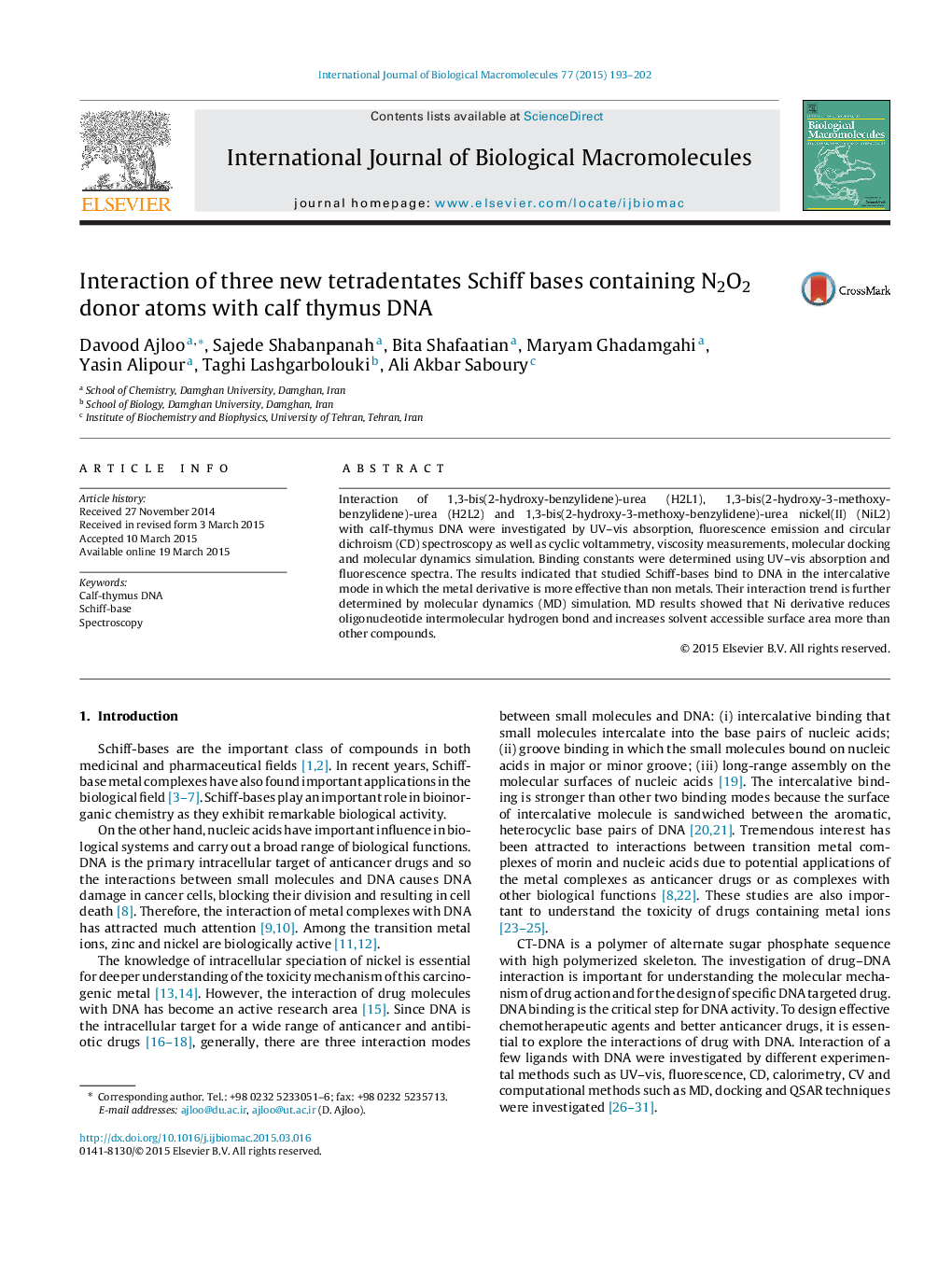| Article ID | Journal | Published Year | Pages | File Type |
|---|---|---|---|---|
| 1986271 | International Journal of Biological Macromolecules | 2015 | 10 Pages |
Interaction of 1,3-bis(2-hydroxy-benzylidene)-urea (H2L1), 1,3-bis(2-hydroxy-3-methoxy-benzylidene)-urea (H2L2) and 1,3-bis(2-hydroxy-3-methoxy-benzylidene)-urea nickel(II) (NiL2) with calf-thymus DNA were investigated by UV–vis absorption, fluorescence emission and circular dichroism (CD) spectroscopy as well as cyclic voltammetry, viscosity measurements, molecular docking and molecular dynamics simulation. Binding constants were determined using UV–vis absorption and fluorescence spectra. The results indicated that studied Schiff-bases bind to DNA in the intercalative mode in which the metal derivative is more effective than non metals. Their interaction trend is further determined by molecular dynamics (MD) simulation. MD results showed that Ni derivative reduces oligonucleotide intermolecular hydrogen bond and increases solvent accessible surface area more than other compounds.
